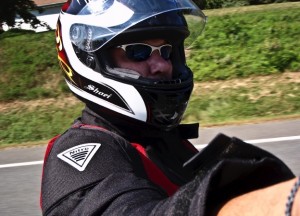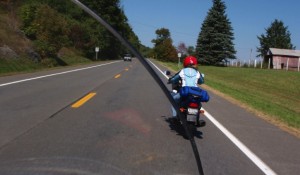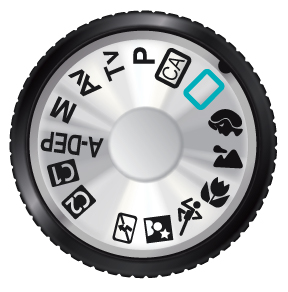In the last column, we talked about how an iPhone makes for a perfectly capable and in some ways, even a superior camera for many people. So why would anyone even bother to buy a small pocket sized camera (cameras often referred to as Point and Shoots or P&S for short)?
[ad#Google Adsense 300×250 in story]You wouldn’t — if you think the photos you take with the iPhone are good enough for your purposes. But let’s take a look at the pros and cons of a typical P&S.
While P&S’ are generally small enough for a purse or a jacket pocket, none are able to fit into the pockets of your jeans as easily as an iPhone. As manufacturers continue to try and cram more hardware features into their P&S, they will continue to be wider and thicker than the iPhone.
But size does have its advantages. If you’ve ever been to a zoo, seen animals in their enclosures and tried to get a close-up with your iPhone, you’ll know it’s difficult if not impossible. The bulk of a P&S allows the bigger lens to have zoom functionality easily beating the iPhone. An optical zoom of 8x to 12x is not uncommon in many mid-range to high-end P&S. Those numbers mean you can get closer shots without having to get physically closer — great for those tiger shots.
(aside: When buying a camera, ignore any digital zoom claims. Only look for optical zoom numbers — higher is better).
P&S also have a great deal more software control over their internal sensor — what a digital camera uses in place of film. That control allows you to more easily tell the camera what you are shooting and allows the camera to make better and more adjustments than the iPhone.
Look at the top or back of any P&S — there will generally be a dial (or a menu option for those cameras that have moved that functionality into software) that allows you to take control over your image taking.
The web site Photoburbia has a perfect illustration of the typical P&S Mode Dial.In future columns, we’ll talk more about what each of those symbols typically mean but, right now, think of them as meaning control — control over how your camera lens and sensors “interprets” the image you are about to shoot. You have little to no control over your iPhone in this manner.
For example, every P&S has what is known as Portrait Mode. Generally used for close-ups of faces, Portrait Mode tells your camera’s software, hardware and lens to focus only on what’s close and to blur out the background. Some cameras even make assumptions about skin tone and color to even out the face.
 The Mode Dial allows for a much greater degree of creative control in the camera than is ever possible with an iPhone.
The Mode Dial allows for a much greater degree of creative control in the camera than is ever possible with an iPhone.
P&S are also better than the iPhone when trying to shoot action shots — kids and pets running around the backyard, cars zooming by, or waves crashing on a beach. Any time you are trying to capture movement in the shot, the P&S, even in Automatic Mode, will often get shots the iPhone simply can’t get.
Throw in the P&S’ ability to manipulate the shutter speed (how fast the camera lens opens and closes) either directly in Manual Mode or via a setting on your Mode Dial and the P&S increases your ability to capture the images you want.
While P&S aren’t nearly as fast from off to ready to shoot as a DSLR, the vast majority of them are much quicker than the iPhone. And P&S can be left on, ready to shoot, for a much longer period of time than the iPhone. And because the P&S is dedicated to one thing only, battery life can be much better too. I used to have a beloved little (and long lost) Olympus Stylus 790 SW that would go for a week between charging.
Speaking of that Olympus, it was able to do a lot of things I wouldn’t never think of doing with my iPhone or, for that matter, my DSLR.
For example, if you are even a little outdoorsy, you will quickly come across situations where you wouldn’t dare use your iPhone. Would you take your iPhone out in the rain to take photos of raindrops or ducks? How about skiing to take pictures and video of your wife learning to ski? Would you mount your iPhone to a motorcycle to get pictures and videos of a trip?
 Here’s a shot of me on my motorcycle (don’t worry, I was stopped at the time). This is a self portrait I wouldn’t even begin to attempt with an iPhone or a DSLR.
Here’s a shot of me on my motorcycle (don’t worry, I was stopped at the time). This is a self portrait I wouldn’t even begin to attempt with an iPhone or a DSLR.
Would you mount your iPhone or your expensive DSLR to a vehicle to take pictures while on the move? I certainly wouldn’t. But I had no problem attaching the 790 SW to my bike to take pictures.
Granted, most P&S are not designed for the kinds of abuse these pictures reflect but it is nice to know if you need a camera capable of being subjected to the elements, they are available.
 The iPhone is a 5 megapixel camera — not bad but try even finding a 5 megapixel digital camera on Shopping.com or Amazon.com There are a few but none I’d recommend. Ten megapixels is the lowest you’ll likely find in a decent camera. And while the megapixel myth is true, it’s always nice to have more, all things considered. And if you are someone who likes to print your photos, more pixels is definitely a plus. And there are several P&S cameras that allow you to print directly to certain photo printers, making them even more flexible.
The iPhone is a 5 megapixel camera — not bad but try even finding a 5 megapixel digital camera on Shopping.com or Amazon.com There are a few but none I’d recommend. Ten megapixels is the lowest you’ll likely find in a decent camera. And while the megapixel myth is true, it’s always nice to have more, all things considered. And if you are someone who likes to print your photos, more pixels is definitely a plus. And there are several P&S cameras that allow you to print directly to certain photo printers, making them even more flexible.
All decent dedicated cameras have removable storage. It offers the flexibility of, if not more storage than your iPhone, at least portable storage. And if you fill up a memory card of your P&S, you can swap out another card.
I love taking photos and posting them online, either to Twitter or Flickr, for family and friends to see. It’s not yet common or even particularly easy to do with a P&S but, with the addition of a memory card like the EyeFi Card, uploading to a photo-sharing site can be accomplished in the background with little or no user input. The EyeFi Card is great if you have a friend or relative who likes taking photos but isn’t computer savvy enough to be able to upload to a photo-sharing site.
Another situation where the P&S really shines is in low light conditions and not just because of the flash — which is definitely better and more flexible than the iPhone’s. Many P&S cameras allow you to change how the flash fires to create interesting lighting effects or to eliminate the red eye effect, for example. All P&S also have the ability to be attached to any number of tripods for steadier shooting.
The biggest advantage, in my opinion, of a P&S over an iPhone is versatility. If you are comfortable with learning the features of your P&S and want to take better photos and are willing to carry around your cell phone and a P&S, I guarantee you’ll take better pictures.
Next up, we’ll talk about the Big Boys — DSLRs.

